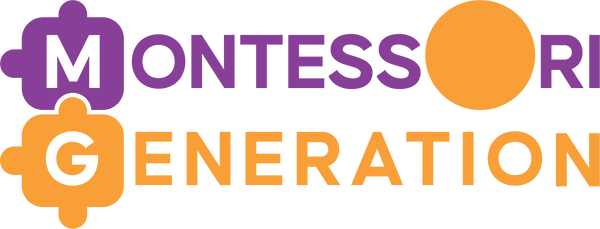Montessori Method
The Montessori method is a revolutionary educational method developed by Italian physician Maria Montessori, which focuses on developing self-directed learning habits and utilizes discovery (instead of instruction) as the primary educational tool. Montessori’s philosophy implies exposing children early to adequate education and materials. In this text, we’ll examine why this method has been recently described as “broadly proven to lead to favorable outcomes in children’s development.”
What is the Montessori method?
Montessori education allows the children to learn at their own pace and with the material selected by themselves while the educator guides, provides knowledge, and assesses the child’s development. The teaching approach is tailored to encourage independence in performing activities and meet early childhood needs.
This revolutionary method impacts all aspects of children’s development, including cognitive, emotional, social, and physical. The child is given limited freedom to discover the pathways which accelerate their growth the most. This way, the child becomes a more self-directed, confident, and enthusiastic learner, which leads to a host of positive developmental outcomes.

History of the Montessori Method
Maria Montessori created the Montessori Method at the end of the 19th century after a few years of working as a pedagogical researcher. She realized that the traditional pedagogical methods employed to educate young minds had counterproductive effects and that a new approach was needed. Her idea was to create better environments in her classrooms, which would, in turn, support the process of acquiring various life skills. Maria’s program was based on her professional work experience and research into areas that focus on early childhood.
The Montessori method was then born as a way to present to the world the possibilities that a more liberating education can have on the child’s development. Over the decades, it has spread throughout the modern world, with Montessori societies emerging in countries all over the globe, including the Netherlands, England, the US, India, and Pakistan. Today, around 20000 schools use the Montessori method in their curriculums to unlock children’s greatest potential.
In 2022, independent studies confirmed that there is no better educational program focused on preschool childhood than the one based on Montessori materials and philosophy. Many modern parents apply for the training courses that provide them with a guide for activities they can apply in their home “classrooms.”


7 Principles Of The Montessori Method
The Montessori Method argues that each child has an inherent need to learn and be busy. Therefore, the teacher’s role isn’t to force a learning trajectory onto the child but to help them find his best-suited learning process following these seven principles:
Free Choice
More responsibility is taken on a child's behalf when they are given the freedom to choose their own learning path. Although the method imposes some hard limits on this freedom, the child has a much wider range of possibilities than with traditional schooling. A child gradually defines their sense of independence through better activities and information received.
Order
Recent examination of the optimal learning environment has concluded that the order in which the child experiences said environment can scale or inhibit the learning effect. Montessori classrooms are therefore assembled with care regarding physical layout and conceptual requirements.
Interest
Psychological and pedagogical researchers agree that a child’s genuine interest in the subject positively impacts the adoption of the material. Work done in areas where there is no reluctance from a child proves to be more efficient than the one prepared using a ”one size fits all” model.
Movement
Children learn through interaction with the environment, and the movement allows them to experience what’s out there. Once a child is presented with an object it can’t identify, it has to learn about its characteristics to be able to “handle” or understand it. A child comes into contact with unfamiliar circumstances and areas and then tries to search for a “solution” and make sense of it all. That’s when the development happens.
Context
Traditional teaching methods emphasize learning by memorizing and repeating. Montessori classrooms emphasize learning by doing. The child is left to choose what they will devote their attention to. They gather information by learning from a “guide” they create for themselves. The role of the instructor is to organize the context so that it allows the most stimulating learning pathways.
Learning From Peers
Imitation is one of the primary forms of learning with children. Nothing motivates a child to learn something new than seeing a peer doing it. The Montessori method utilizes this trait and lets children learn from each other. It can even be seen in their joyful body language when they realize someone their age is doing something they are trying to do.
Teacher's Guidance
The teacher’s role within the Montessori method isn’t passive. Teachers are meant to create the optimal learning environment and set the limits within which the child can roam free and learn. From an emotional support standpoint, teachers in Montessori schools are meant to respond to child's needs while maintaining high expectations. This way, “students” are being prepared for future challenges, such as university studies, professional work, and modern-day society in general.

How is the Montessori method used today?
One hundred years ago, Maria Montessori taught a single schoolroom of underprivileged children in Rome. This classroom would go down in history as the first classroom that experienced the Montessori method first-hand. Since then, Montessori education has become one of the most influential forces in the modern educational landscape. In the U.S. alone, five thousand schools actively apply the Montessori method to teach approximately one million children. Thousands more schools are scattered throughout the world, from Australia and New Zealand all the way to Finland and Norway.
2022 has seen more American parents than ever looking to sign up their boys and girls into kindergartens that integrate some sort of Montessori-inspired activity or program. This meteoric success can be attributed to its revolutionary elements, such as its individualistic approach and discovery-centered way of learning. A Montessori classroom doesn’t impose the curriculum on students, whether or not they’re ready for it. Rather, it provides a stimulating environment that encourages accelerated development and only presents new material to the child when they are ready to learn it. The instructor is tasked with watching out for signs that a child is ready to learn new materials and to provide those materials at the right moment.
One anecdote, in particular, speaks to how much influence the method has acquired over the years. In 2018, Day One Academies project was introduced and given $1 billion in funding to distribute to full-scholarship Montessori-inspired preschools in underprivileged communities. Its founder? Amazon CEO Jeff Bezos, a Montessori alumni himself.
How to apply the Montessori method at home - 5 tips:
1. Empower Your Child
Teach your kid how to do some basic tasks it’s capable of, like pouring a glass of milk, putting away the dishes in the lower cabinets, or tying their shoes. Then, watch them perform the task and be their moral support. Before long, they’ll start doing the acts by themselves. Keep track of their progress and repeat the same with more complex tasks as they get older. This way, your toddler will develop a sense of accomplishment. It will prove excellent training for any activity they will rely on in the future.
2. Encourage Your Child To Learn
Children are natural explorers who always search for new ways to discover the world around them. So, give them the proper tools and encouragement, and they’ll never stop doing it. Therefore, they’ll never stop learning.
3. Set An Example That’s Worth Imitating
One of the key components of Montessori education is learning through imitation. Children are on a constant lookout for new movements, skills, and practices to copy and the first “victims” of their quest are those in their close vicinity. Always keep in mind that what you say carries much less weight than what you do. If the child sees you flipping the pages of a book, they are much more likely to pick one up as well. If you put hard work into your chores, so will your young one in theirs. They’ll become more independent than you ever thought they could.
4. Make Good Habits Easy To Start…
…and do the exact opposite with the bad ones. In a Montessori environment, the objects are placed in a way that leaves the child room to decide what they want to spend their time on. However, every single choice is good. You can use this method to make the instruments of good habits (like books or building blocks) easy to access and the instruments of bad habits (like smartphones, sweets, and tablets) hard to get to.
5. Turn Your Child’s Playroom Into A Montessori Learning Space
Psychology and pedagogy experts have developed Montessori toys that are specifically made to encourage creativity, self-directed learning, and zeal for knowledge. Equipping your child’s room with them will immediately turn them into a Montessori environment. You can find the right ones for your child by going to our homepage. You can contact us at info@montessorigeneration.com and find more information about our work, research, activity resources, and more.


How to homeschool using the Montessori method for ages 0-3?
Schools start at the age of 6, which is the period when most children are ready to comprehend the school curriculum. The trouble is, your little one experiences the most rapid development in the first six years of life. It comes as no surprise that many famous psychologists thought of this period as the most important for laying an emotional, social and cognitive foundation for future life. In 2022, science and research resources fully back this school of thought.
At this stage, children are little learning machines that don't just want to learn. They need to learn to surmount all the difficult developmental stages that they face. The good news is that you can accelerate their progress and help them reach maturity at an above-average rate.
It all boils down to the environment that you create for your child. According to the Montessori method, it needs to be stimulating and able to fulfill the child’s need to explore and learn. One of the crucial aspects of that environment are Montessori toys.
Through play, the child is practicing their new abilities like making new sounds, new movements, understanding the link between an action and the change in the environment, and so on. Once the new ability has been fully acquired and incorporated, the toy that the child used to practice that ability stops being interesting. This type of “training” provides a natural advancement through various stages.
Consequently, each stage requires a different set of toys for them to achieve their effect. Montessori toys for 1 year olds or toys for 2 year olds will develop a different set of abilities than Montessori toys for 3 year olds or 4 year olds, and toys for kindergartners.
Is the Montessori method effective?
Research attests that there are some definite advantages to Montessori education. Children grow up to be more self-directed, disciplined, and concentrated. Below are only some of the people who experienced Montessori education at some point in their lives:
- Larry PageandSergey Brin, co-founders of Google.com
- Jeff Bezos, financial analyst, founder, Amazon.com
- Katherine Graham, owner/editor of the Washington Post
- Prince William and Prince Harry, English royal family
- Jacqueline Bouvier Kennedy Onassis, editor, former first lady (John F. Kennedy)
- Julia Child, famous chef, star of many TV cooking shows and author of numerous cookbook
- Anne Frank, famous diarist from world war II
- Gabriel Garcia Marquez, Nobel Prize winner for Literature
- Berry Brazelton, noted pediatrician and author
- Friedensreich Hundertwasser, Austrian painter and architect
- George Clooney, Academy Award-winning actor
- Kami Cotler, actress (youngest child on long-running series The Waltons)
- MelissaandSarah Gilbert, actors
- Elizabeth Berridge, actress (Constanze in Amadeus)
- Joshua Bell, American violinist, owner of Stradivarius violin
- Sean “P. Diddy” Combs, rap star, music mogul

Pros and cons of the Montessori method
It goes without saying that there are no universally correct models of education. Each method has its upsides and downsides. Here we’ll explore some of the Montessori method’s biggest ones.
Pros:
- From an early age, Montessori education reinforces order, concentration and independence.
- Montessori students experience more freedom throughout their education.
- Children develop more adaptive social and emotional skills as well.
- Children spend more time playing with toys developed following Montessori’s findings
- Montessori toy which is suited for your child’s age will keep it occupied for long and provide a healthier alternative to screens.
- The method empowers and encourages children to seek knowledge on their own
Cons:
- Finding the right Montessori educational institution in your area can be difficult
- Montessori schools are generally more expensive than traditional ones
- Implementing these methods in your home requires a lot of effort on your side, so we suggest using the tools that will help you save time
- You’ll have to adjust your daily habits to provide the best possible development prospects to your child.
- Montessori method requires big changes in the environment that your child experiences
Montessori Toys by Age
If you are looking for an age-specific toy, check our collections for different age groups.
New parents will be interested in toys from the 0-12 months old collection. Once your baby becomes a toddler, you should take a look at our toy selection for 1 year olds. When your child starts constructing simple sentences, you will find a range of toys that will help their language skills in the collection for 2 year olds. At this point, your kid is pretty creative and imaginative - what you want to do is develop those skills even further with Montessori toys for 3 year olds. A great time to start playing with puzzles and memory games is when your kid enters a 4 year olds category. Finally, your little one is ready for school, having played with math and spelling toys from our 5+ year olds collection.
Pick a toy that will best help your child's skills and development.
Free Delivery
Over $80
Easy Returns
No questions asked
Unbeatable Warranty
1-year ++ warranty
- Secure CheckoutWorld’s most secure payment method






